I tried ProCook's £400 bean-to-cup coffee machine. Now I want to ditch my £700 version for it – here's why
This coffee machine is all style – with the substance to match
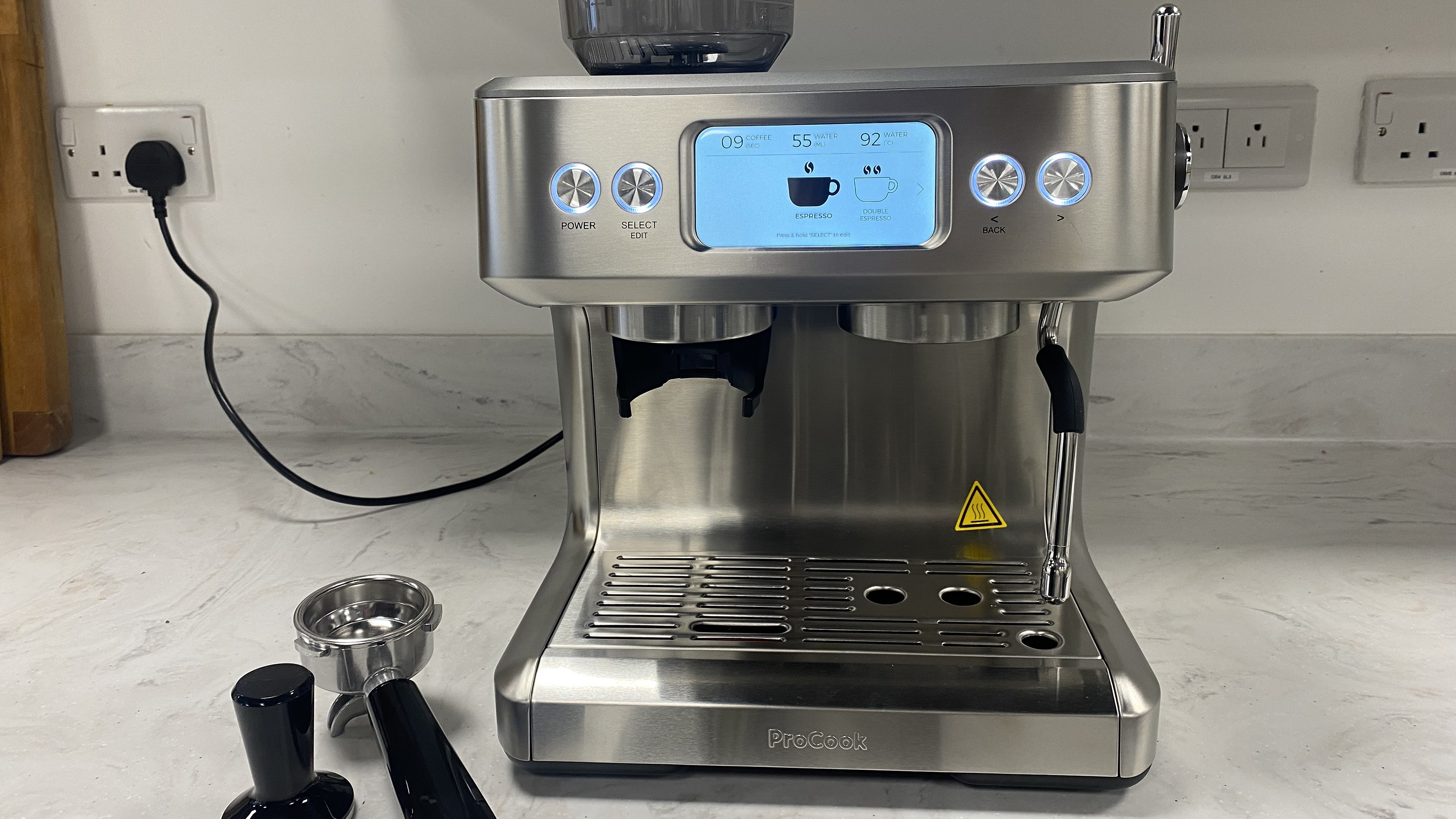
This unbelievably sleek bean-to-cup machine offers everything you would usually find in a product with a far, far larger price-tag. With a swish digital interface (which will be hugely useful for beginners), a huge range of grind settings and a stainless steel design to make any at-home coffee station shine, it's simply phenomenal that you can get this kind of quality for this price. To put it simply, I want one too!
-
+
Outstanding build quality, including the milk frother and grinder
-
+
Display screen makes the process seamless, especially for beginners
-
+
30 grind settings and on-screen pressure reading
-
+
Quiet to use with a preheat for your mugs
-
-
I wish the portafilter and tamp felt a little heavier in the hand
Why you can trust Ideal Home

This ProCook Barista Bean to Cup Coffee Machine review is an in-depth look at how this product shaped up in the Ideal Home test kitchen, so that you can establish whether investing in it is worth it.
As far as the best bean-to-cup coffee machines go, I think this is one of the best (if not the best) value one I've ever tried. Here's why.
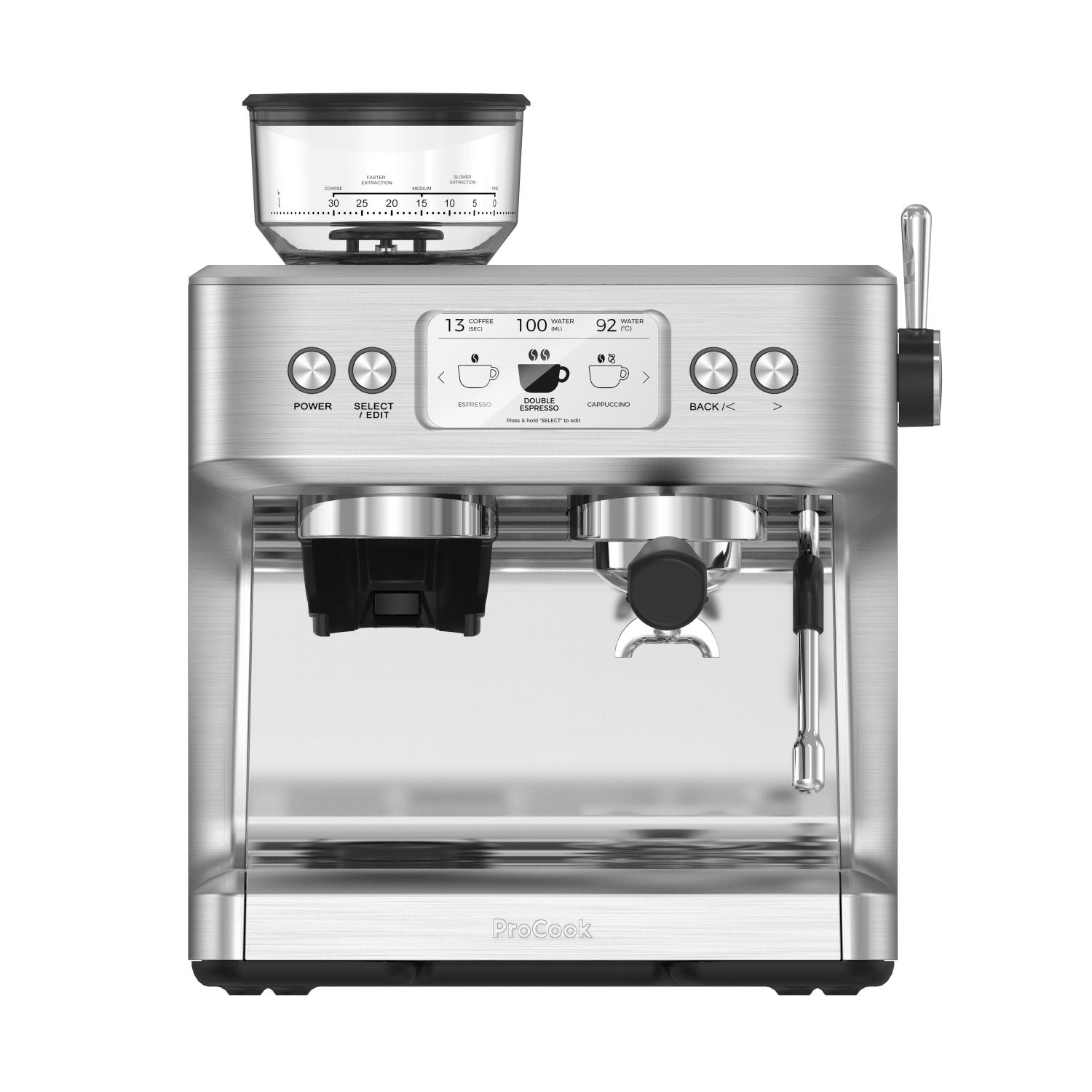
I think ProCook's new bean-to-cup machine is a total steal.
In a nutshell
ProCook is a brand best-known for its affordable cookware (which I personally think is the best quality alternative to brands like Le Creuset and Staub if you're on a budget). This is one of the machines in its brand-new range of coffeemakers, which we previewed in our first look at the collection, since the brand's expansion into appliances last year.
For the price-tag of £399.00, it seriously delivers when it comes to features. My standout favourite thing about the machine was the digital interface, which walks you through everything from grinding to descaling, while still allowing the 'hands-on' appeal of the machine to shine through.
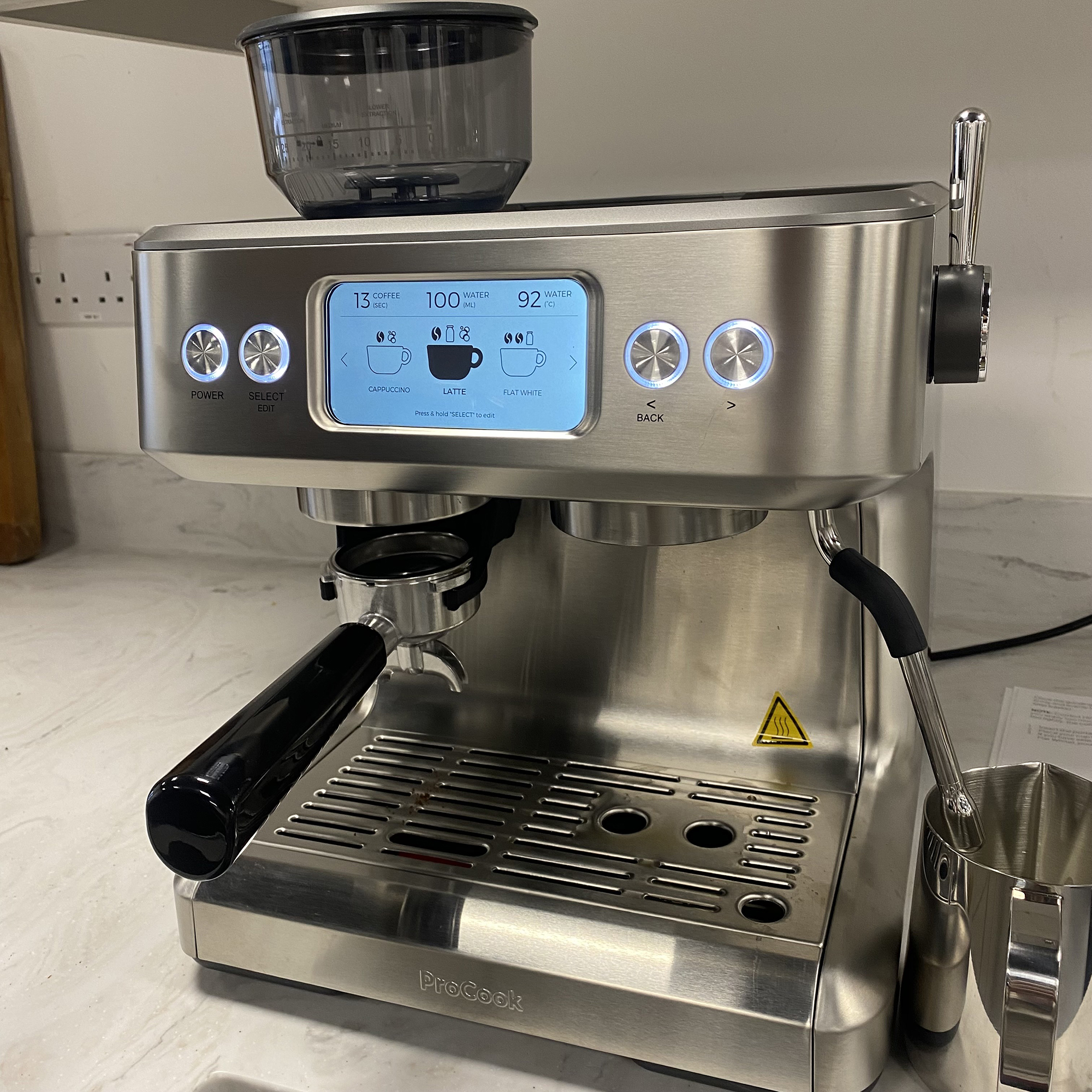
Usually, if you want this kind of at-home barista experience, you'll have to pay at least £500, if not more. You get that for far less £££ here, with a quiet, capable integrated conical burr grinder, 30 grind settings, a fast and effective heating system (which was very good at warming cups) and the perfect result: a delicious tasting espresso.
This is the mid-range model in ProCook's new collection, so it's not the fanciest option available. For £200 more you can pick up the Barista Elite Bean-to-Cup Espresso machine (£599 at ProCook), which crucially features an automatic steam wand that you can use at the same time as pulling your espresso shot (the stuff of dreams, truly).
The milk frother is easy to use and purge, though it's fairly standard as far as manual wands like this go. With a manual frother, using plant milk for drinks is a bit tricky as it burns easier, which is why I like bean-to-cup machines having an automatic option. Also, the tamp and the portafilter could also feel a bit heavier, but I understand why both of these things might have been out of the budget for this machine.
Despite that, this is definitely the machine I'll be recommending when people ask me about bean-to-cup machines under £500 in the future. It's a total steal at this price, leaving me wondering how ProCook has packed in this much quality to a machine with this RRP.
ProCook Barista Bean to Cup Espresso Coffee Machine specifications

- Dimensions: 42.5cm x 35cm x 41.5cm
- Weight: 9.7kg
- Capacity: 250g bean hopper, 2L water tank
- Included: 58mm portafilter, tamper, single and double filter baskets, milk jug, a cleaning kit
- Grind settings: 30
- Options: Single or double shot, hot water, milk frother
- Adjustable features: dose volume, shot volume, extraction water temperature, grinder burr adjustment
- Colours: stainless steel/black
Getting started
It would be amiss of me to not start with just how gorgeous this machine is. It's strikingly Sage-like in its design, reminiscent of the Sage Barista Touch Impress, which is one of the most coveted at-home coffee machines we've ever tried.
Once it's out of the box, one of the first features of this machine you'll encounter is the pre-heating cycle, which I found to be a huge plus.
The flashing lights on the machine will let you know when the optimal temperature for making your coffee has been reached, but while you wait you can use the very effective warmed surface on the top of the machine to get your cup prepped for coffee.
From there, the process of working out how this machine works (even if you are a beginner) is so straightforward. That's mainly thanks to the aid of the digital screen, something I'm usually used to seeing on machines far more expensive than this.
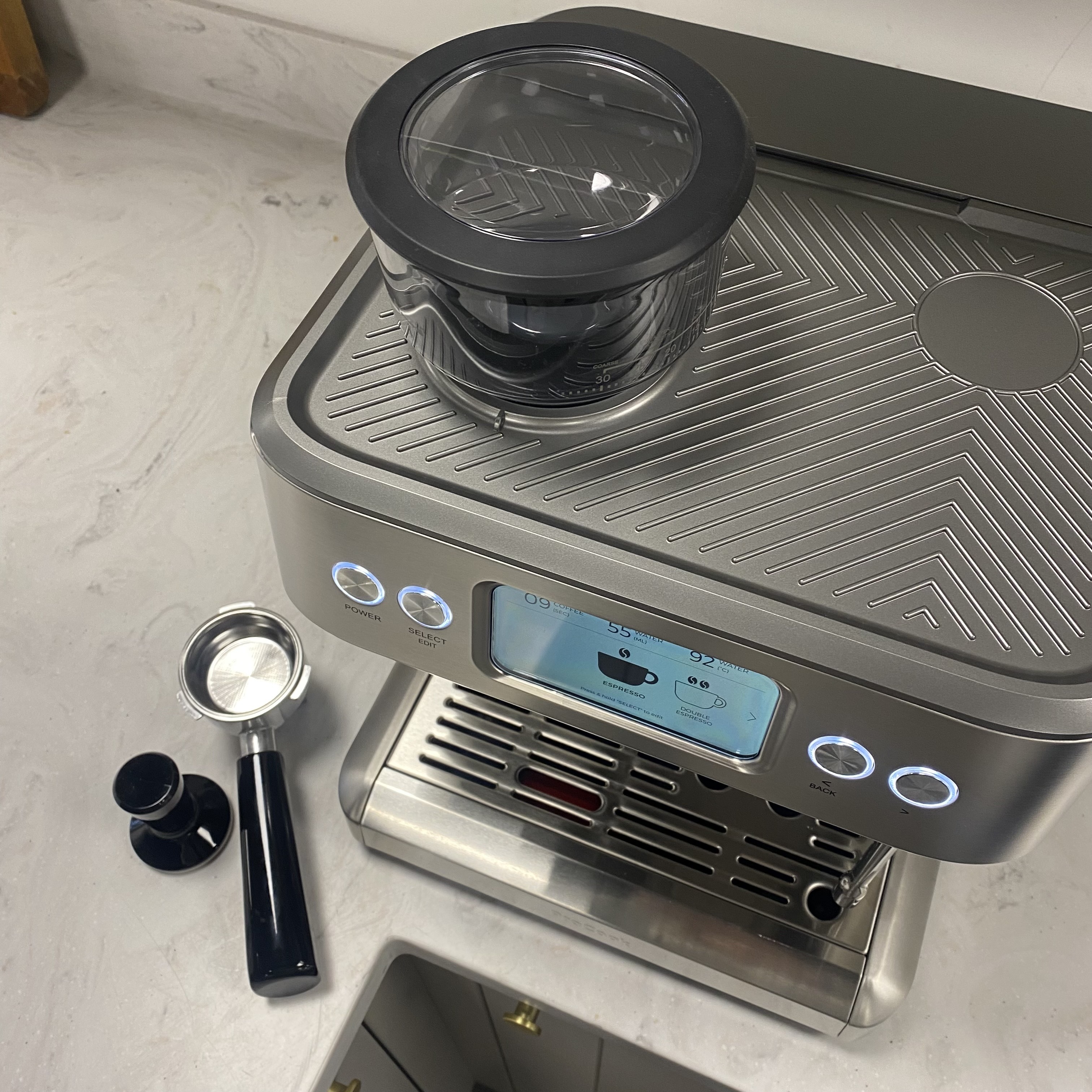
The top of the machine, where you can warm your mugs.
As a point of comparison, my everyday coffee machine (the Sage Barista Express Impress) is far more expensive, at £729.95 and doesn't feature a screen, so it's a great value addition here.
The first thing I needed to do was to flush the machine out. I was very happy that I could run water through the steam wand and the group head and portafilter at the same time.
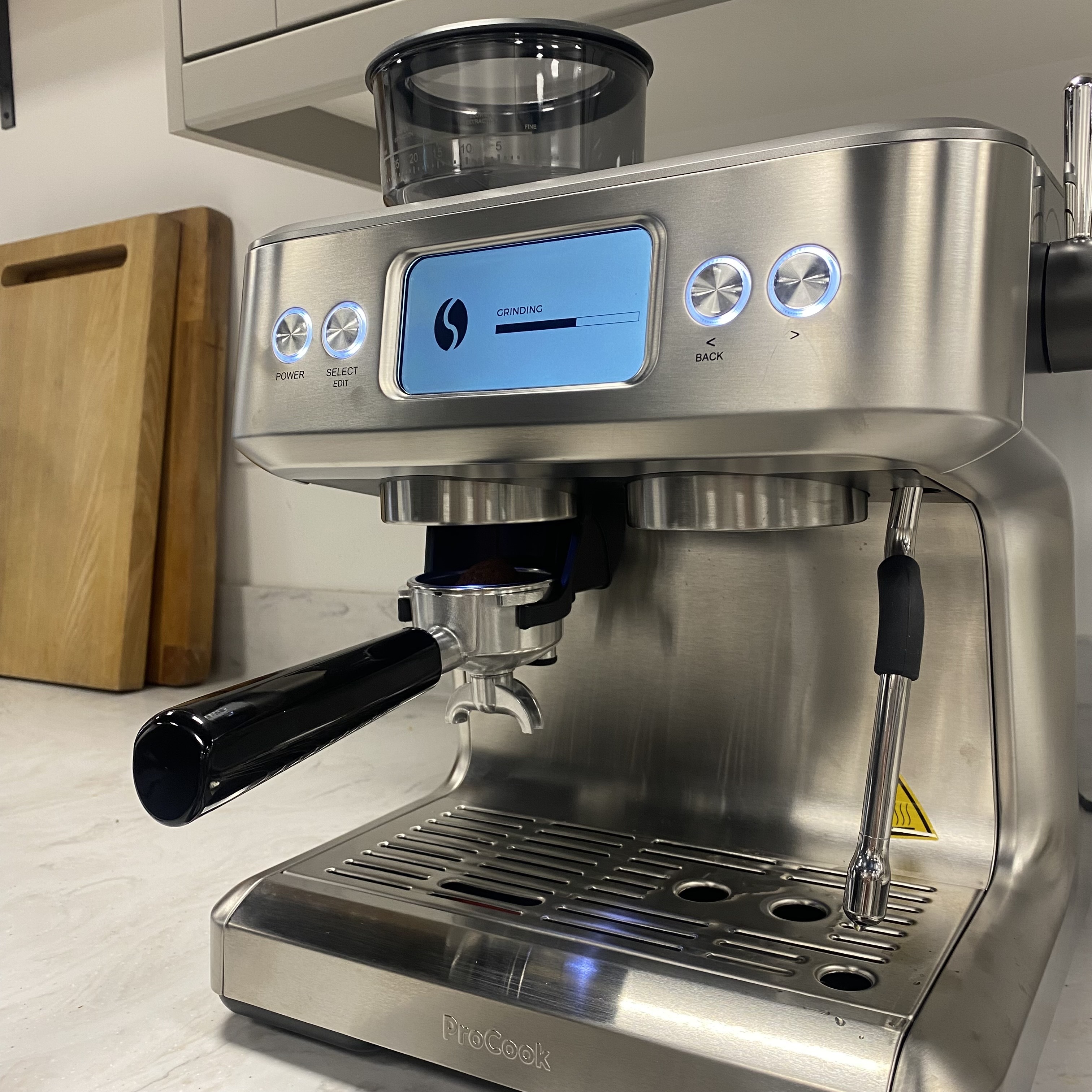
Grinding beans with the ProCook Barista Bean to Cup machine.
I also liked that the screen walked me through that initial cleaning process. There are times with my Sage where I run into an issue and don't know how to troubleshoot it. With the step by step instructions on the screen, you feel you can't go far wrong here.
Dosing and tamping
If you've had your eye on a bean-to-cup coffeemaker, but you don't fully understand the mechanics of how one works then this machine is perfect for you, with walkthrough instructions.
That begins with the grinding of the beans. Once you've poured your selection of beans into the hopper (which is the plastic cone on the top left of the machine), the digital screen will guide you to select your drink type.
You can use the buttons on the right of the machine to scroll through your options, of which there are many, ranging from a double espresso to a latte.
For each drink, the screen will recommend which filter basket you use in the shape of a single coffee bean or two (communicating either a single or a double shot) and then direct you to place your portafilter (which has a basket on the end and features a long black handle) under the grinder.
I always find switching out filter baskets on any coffee machine a bit irksome, but the ProCook equipment was one of the least resistant to swap around.
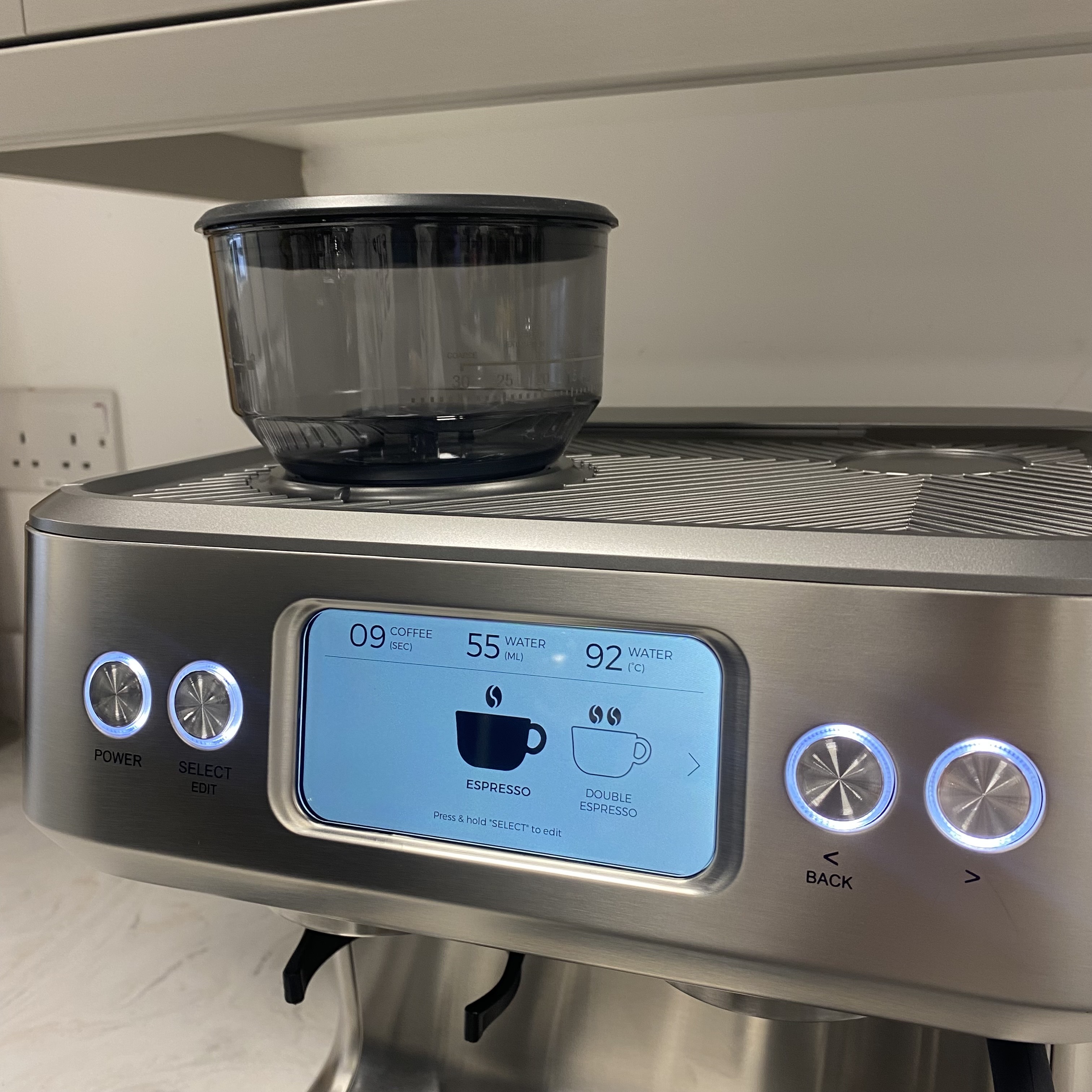
The menu of drinks options on the ProCook Barista machine.
There are a huge 30 grind sizes to choose from with this machine, which makes it feel very hands-on. If it's still a little early in your coffee journey for you to be experimenting with grind sizes, a middle ground of 15 will suit you just fine. To set the grind size, all you need to do is shift the hopper and wait for the numbers to line up on the body of the machine.
After a day of testing coffee machines, I was so relieved that this product was the quiet when grinding. Some machines like this are horrendouly loud, but this one certainly won't wake your neighbours when you're making an early morning cup of coffee.
If you know your coffee machines, you'll know there are different levels of automation when it comes to bean-to-cup offerings. This machine most reminds me of the Sage Barista Express BES875UK in its design as tamping is all manual. That means that once the grinds have been dispensed, you pull the portafilter out, put it on a flat surface and manually apply pressure using the included tamp.
With other more expensive machines, you have features like a one-armed bandit to apply the tamp pressure for you, as with another machine I tested that day, the De'Longhi Opera Specialista.
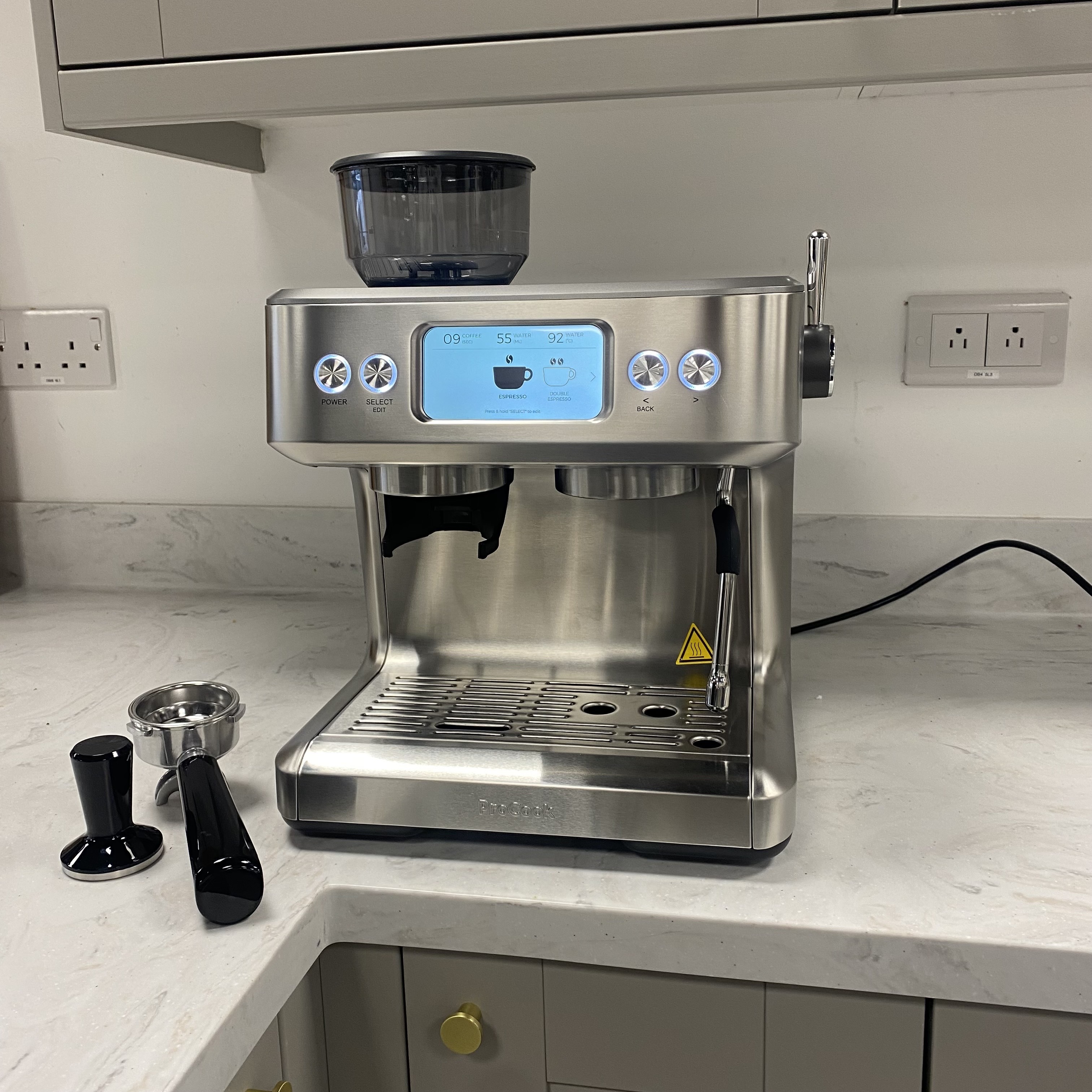
The tamp and the portafilter alongside the ProCook Barista machine.
I didn't overly miss the tamp mechanism and though the portafilter and tamp could feel a bit heavier in your hand to make the process run more smoothly, the result was still fine. If you're a first-timer, the instruction manual is helpful too.
Pulling an espresso shot
Next, onto getting what you're here for: a shot of espresso.
Popping the portafilter into the grouphead was a pretty painless experience, especially when I think about the many machines I've tested that have remained stiff even for months after use.
So, impressed, I confirmed on the digital screen that I wanted to extract an espresso. The screen then displayed a progress bar for 'brewing', along with a pressure reading.
I'll be honest, I was ready to complain about a lack of pressure gauge, so I'm happy it snuck it at the last moment.
The resulting espresso was delicious, rich tasting and complete with a lovely golden brown crema. The taste of your quality will obviously much depend on your beans too, and as I was using my favourite beans from Lost Sheep Coffee, the espresso was as delightful as I expected. My pro tip is to pick up the Get to the Hopper Blend (£9.95 from Lost Sheep Coffee) for the best taste.
The process was easy too and dialling through the other non-milk drinks and going up to a double espresso from there was straightforward.
Milk frothing
As I've explained, the milk frother with this machine is manual. So, when you press the 'latte' or 'cappuccino' option on the interface, you'll be directed to pop the milk jug under the wand, but once you press that steam button, the frothing is up to you.
The milk wand on this machine feels high quality and has a good level of flexibility for making adjustments and cleaning. If you're already a milk frothing pro, I think you'll find this wand easy to whip up any longer drink with.
If your milk wand skills are a little lacking, then the learning curve can feel a little bit steep. That's where automatic milk wands can feel worth their weight in gold, though for this bargain price, I do understand why there isn't one on this particular machine.
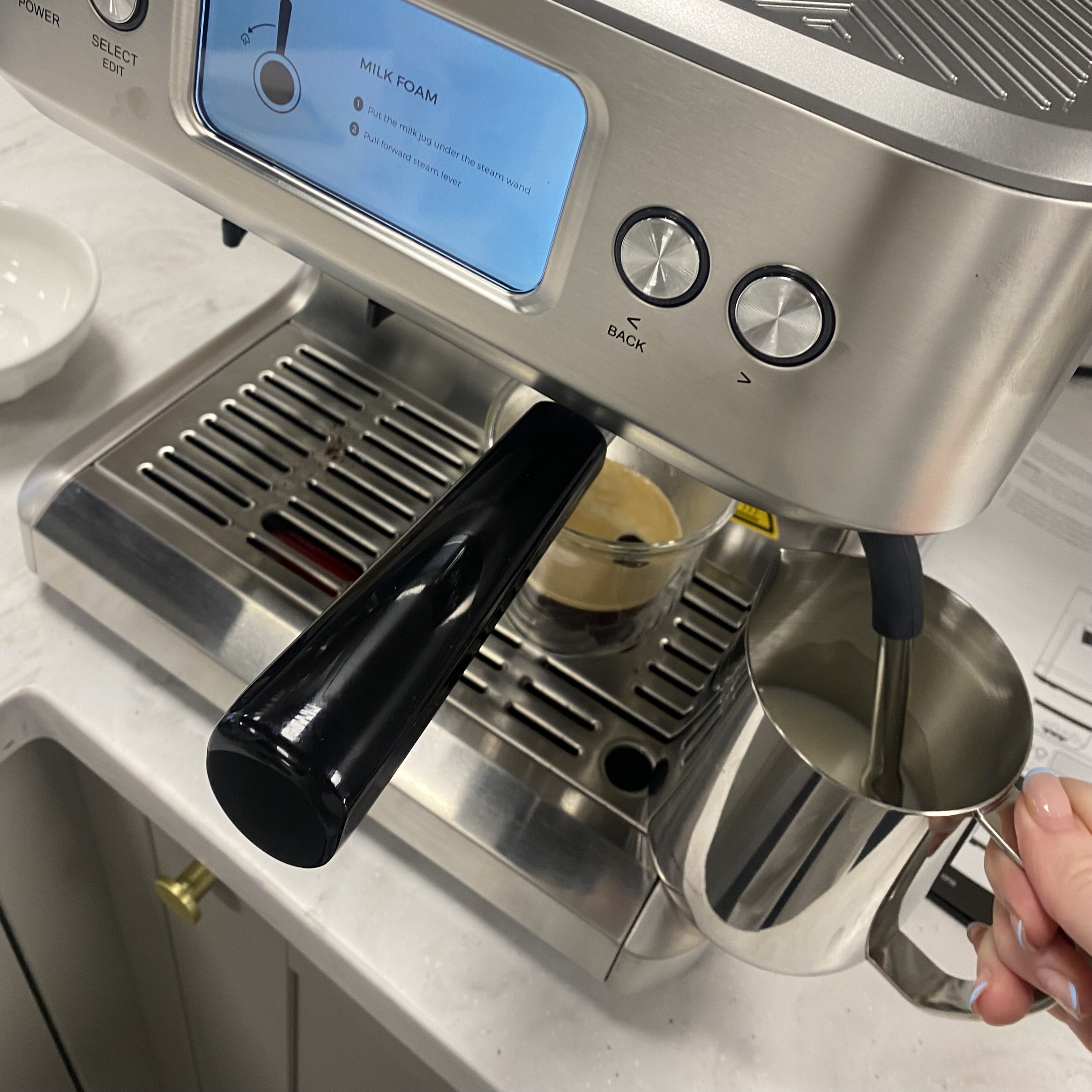
I muddled through well enough for my latte (which was delicious), but I won't be winning any awards for my latte art anytime soon.
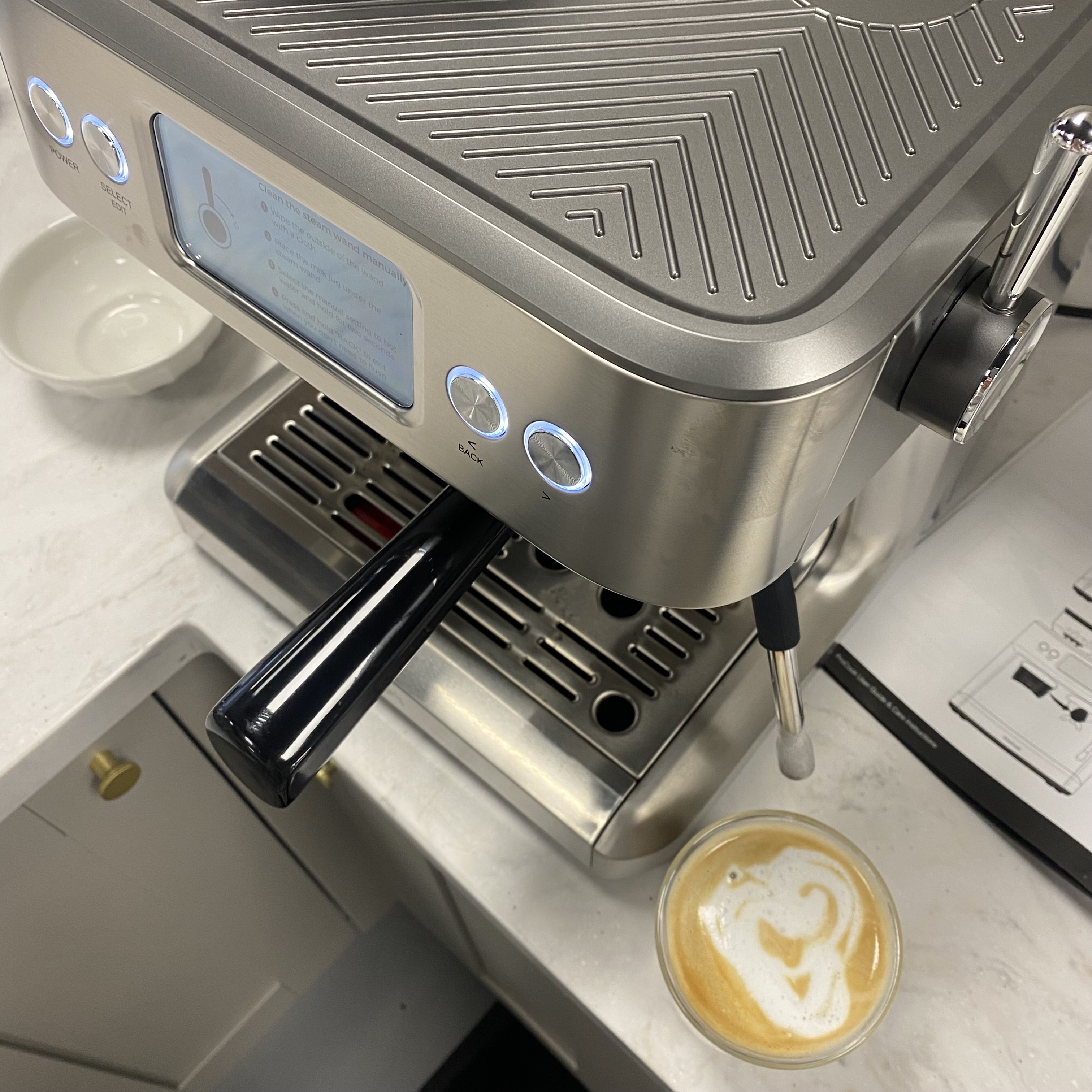
Cleaning the wand requires a damp microfibre cloth and a quick flushing out afterward, all of which is easy to do. The frothing wand can also dispense hot water, if you're in a pinch.
How does it compare to similar coffee machines?
For the price of £399, there's no other manual machine in this style that comes close in terms of value for money. My Sage machine (the Barista Express Impress) feels very similar to this and will set you back over £300 more. So, if I was picking a machine now, it'd be a very easy choice.
The biggest difference betwee the two is that the ProCook doesn't have automatic tamping, but for the money saved, it's worth it. The ProCook also benefits from the digital screen, which the Sage doesn't have.
If you do want to level up to an automatic milk frother, expect to pay up to £200 more. The Ninja Luxe Cafe is one of the best examples I've found of value for money in a bean-to-cup machine and the automatic milk frother is simply divine. I'm hoping to test out ProCook's Elite version of this machine to try the auto-frother there, too.
If you're less fussed about those manual settings and the ability to tweak, then an automatic bean to cup may serve you better. For around the £400 mark, the Magnificia Evo from De'Longhi is a solid choice.
Should you buy the ProCook Barista Bean to Cup Espresso Coffee Machine?
If you're in the market for a sleek bean-to-cup coffee machine but can't quite afford a Sage, this is without a doubt the best alternative I've found. It offers you essentially the same features as the Sage Barista Express Impress but shaves over £300 off the price-tag.
It makes a gorgeous espresso and guides you through the process like a dream. Plus, the milk frother is high-quality, even if I wished the portafilter and the tamp felt slightly heavier in the hand.
I'm genuinely sad to wave goodbye to this machine after a loan period testing it, but I'm looking forward to recommending it to everyone who asks me about affordable bean-to-cup machines in the future.
Get the Ideal Home Newsletter
Sign up to our newsletter for style and decor inspiration, house makeovers, project advice and more.

Molly is Ideal Home’s Kitchen Appliances Editor, the Ideal Home Certified Expert on Appliances. An all-around cooking and baking enthusiast, she loves finding the next must-have product for readers that will their kitchen a better place. She joined the team in September 2022 after working on the editorial teams of Real Homes, Homes & Gardens and Livingetc.
For the last 4 years, she's been reviewing hundreds of small appliances; conducting tests at home or in the Ideal Home test kitchen. She would be hard-pressed to pick a Mastermind specialist subject but air fryers are her ultimate area of expertise, after testing just about every single one released since 2022.
To keep ahead of trends and new releases, Molly has visited the testing and development spaces of multiple kitchen brands including Ninja Kitchen and Le Creuset as well as attended consumer shows such as IFA, hosted in Berlin to see the cooking innovations of the future.
You must confirm your public display name before commenting
Please logout and then login again, you will then be prompted to enter your display name.
-
 IKEA has just launched a massive 96 new products - but these are the only pieces you need to pay attention to
IKEA has just launched a massive 96 new products - but these are the only pieces you need to pay attention toThe classic STOCKHOLM collection just got even better
By Kezia Reynolds
-
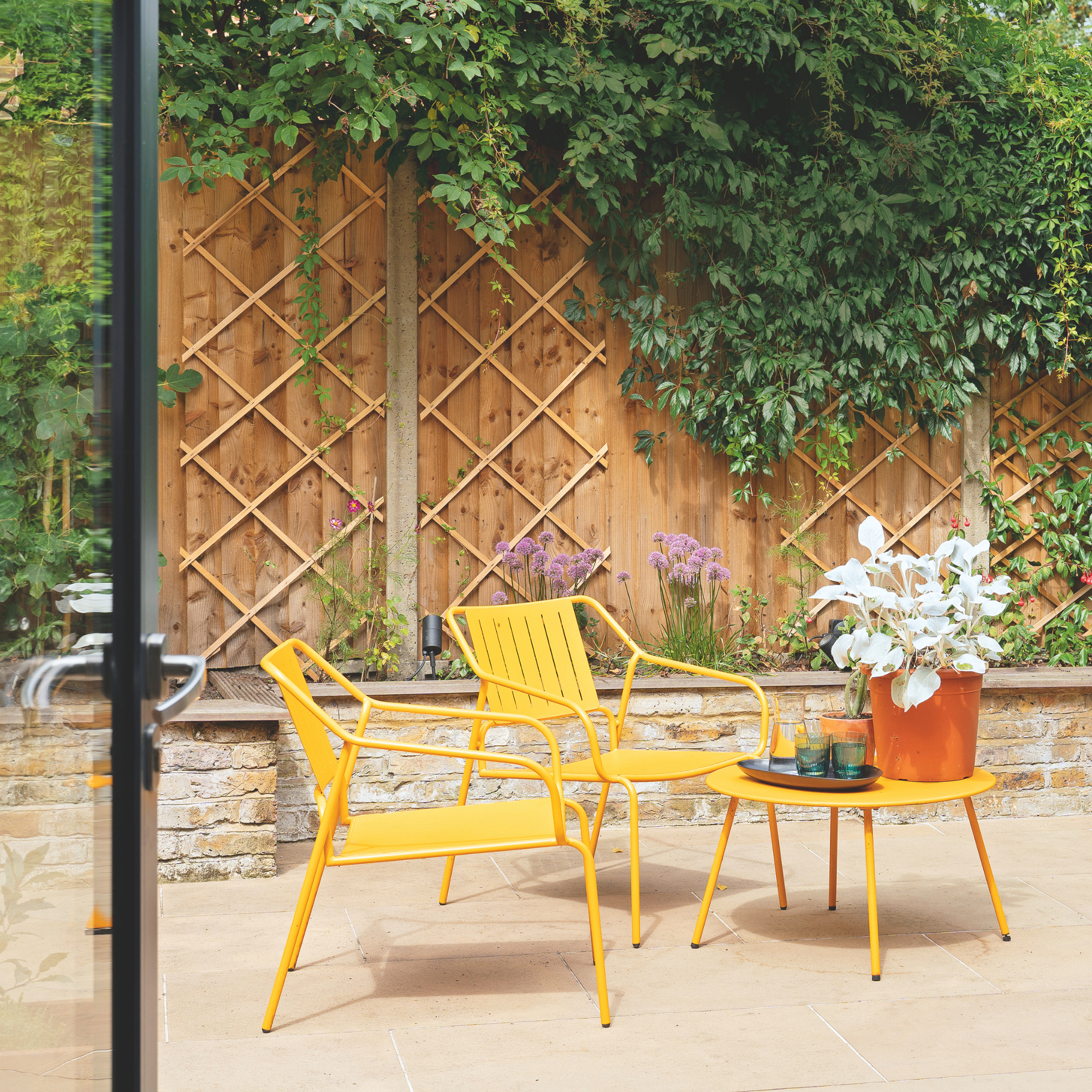 I’m seeing pastel garden furniture at all my favourite brands this spring, but QVC’s sorbet collection impressed me the most
I’m seeing pastel garden furniture at all my favourite brands this spring, but QVC’s sorbet collection impressed me the mostFresh pastel shades are a great way to liven up your outdoor space
By Kezia Reynolds
-
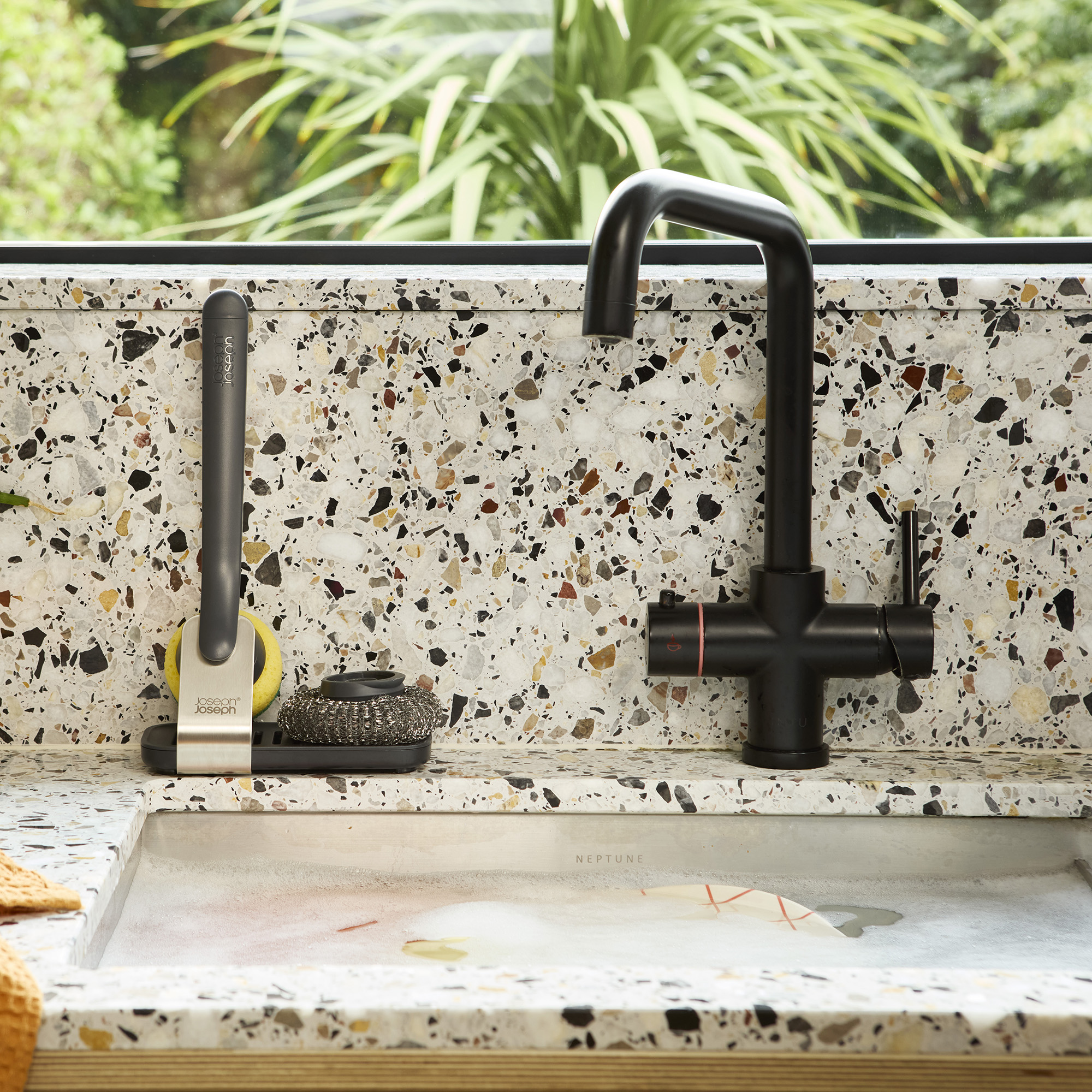 I finally got my hands on Joseph Joseph's genius Sink Tech range - my small kitchen sink has never looked so good
I finally got my hands on Joseph Joseph's genius Sink Tech range - my small kitchen sink has never looked so goodI didn't know stylish washing up accessories existed until I saw this collection
By Holly Cockburn